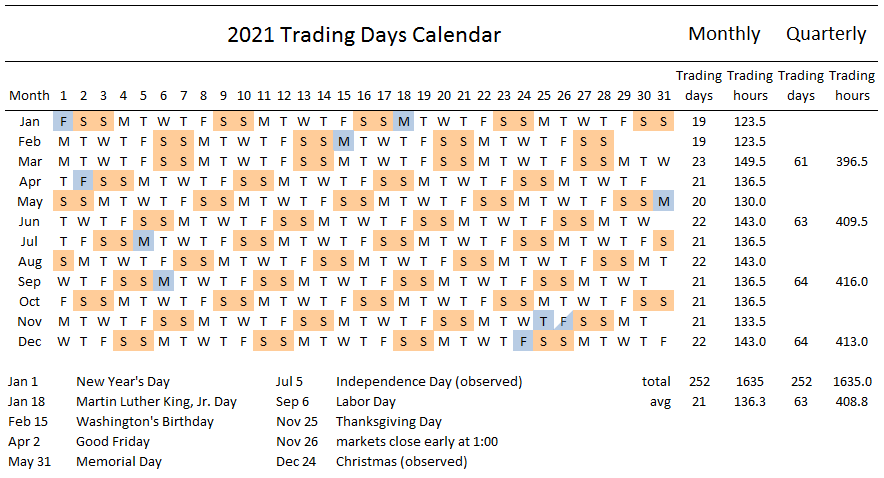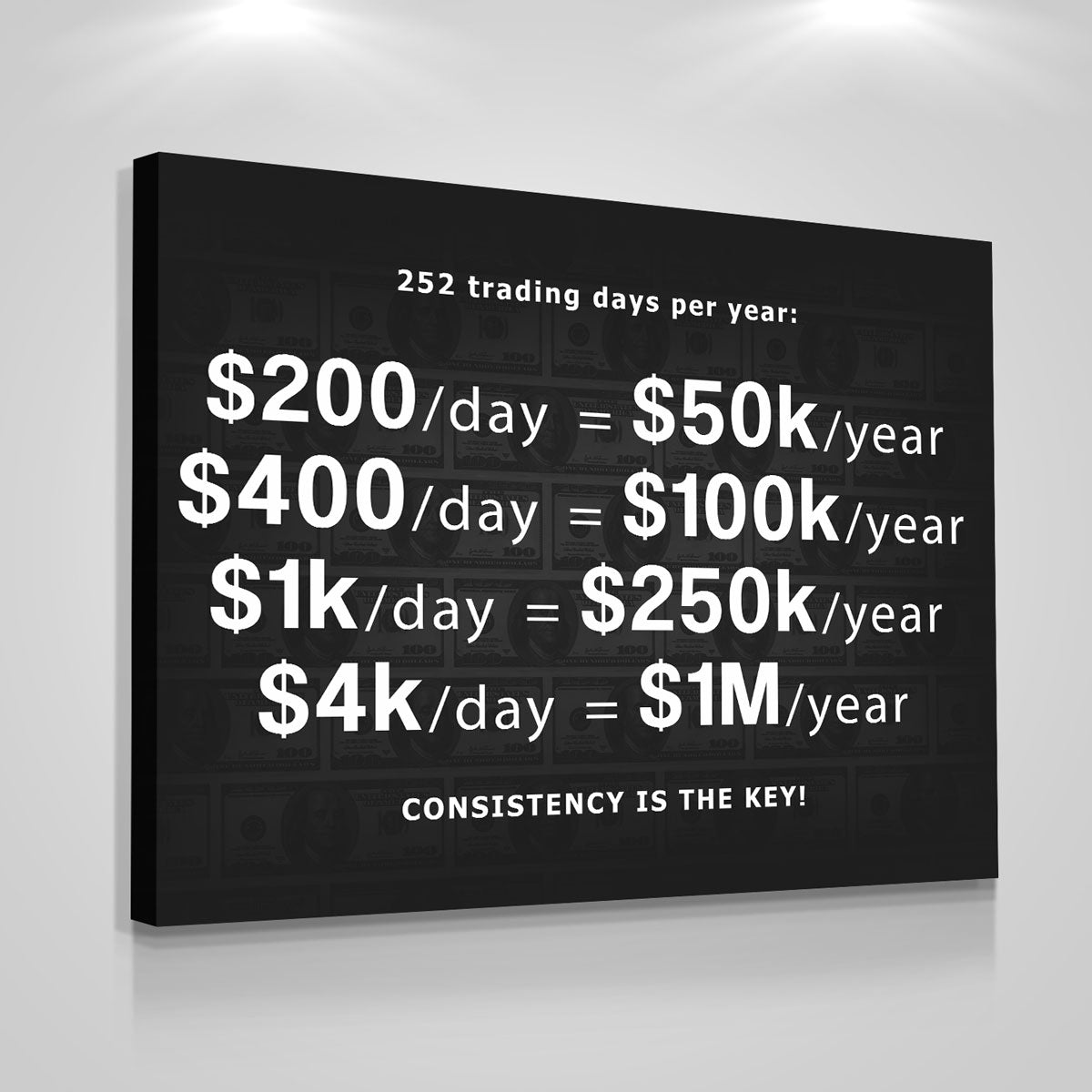There are typically 252 trading days in a year. This number can vary slightly due to holidays.
Stock markets operate on business days, excluding weekends and public holidays. How many trading days in a year are crucial for investors to buy or sell shares, bonds, and other financial instruments? The consistency of trading days ensures liquidity and allows markets to function efficiently. Understanding the number of trading days helps traders plan their strategies and manage their portfolios effectively. It’s important to note that trading days can differ slightly depending on the country and its specific market holidays. For example, the New York Stock Exchange (NYSE) and NASDAQ have their own holiday schedules, which can affect the total number of trading days annually.

Table of Contents
Regular Stock Market Trading Hours
The stock market typically operates about 252 days a year. Most trading days exclude weekends and holidays, ensuring a predictable schedule for investors. Trading stocks can be an exciting journey, but understanding the regular hours of the stock market is crucial. Knowing these hours helps you plan your trades and stay ahead of the competition.
Standard Trading Hours
The main stock exchanges in the U. S. Have set hours:
- NYSE and NASDAQ: Open from 9:30 AM to 4:00 PM Eastern Time.
- Weekdays Only: Trading occurs from Monday to Friday.
- Excluding Holidays: Markets close on major U.S. Holidays.
Pre-market Trading
Pre-market trading gives you a head start:
- Starts at 4: 00 AM ET: Early access to the market.
- Ends at 9: 30 AM ET: Right before standard trading begins.
- Lower Volume: Fewer trades, but potential for big moves.
After-hours Trading
After-hours trading extends your opportunities:
- Starts at 4: 00 PM ET: Right after the standard market closes.
- Ends at 8: 00 PM ET: Extended time for making trades.
- Higher Risk: Less liquidity can lead to larger price swings.
Weekend Trading
Most traditional stock markets are closed on weekends. However, there are alternatives:
- Cryptocurrency Markets: Open 24/7, including weekends.
- Futures Trading: Available during specific weekend hours.
- International Markets: Some open on Sundays due to time zone differences.
Understanding these hours can significantly impact your trading strategy. Stay informed and make the most of your trading days.
Extended How Many Stock Trading Days in a Year And Hours
Extended stock market trading hours increase the number of potential trading days in a year. Stock markets typically operate around 252 trading days annually. Extended trading hours offer more flexibility for investors. These hours allow you to trade beyond the standard market times, providing additional opportunities.
What Are Extended Trading Hours?
Extended trading hours refer to the time before and after the regular trading session. They allow investors to react to news and events that occur outside of the standard trading day.
Benefits Of Extended Trading Hours Fidelity
Extended trading hours provide several advantages. Here’s a quick overview of the benefits:
- Flexibility: Trade outside the standard hours to fit your schedule.
- Reaction to News: Respond to after-hours announcements or events.
- Increased Opportunities: Take advantage of price movements during non-standard times.
Risks Associated With Extended Trading Hours
While extended trading hours offer benefits, they also come with certain risks. This section outlines some key risks:
- Lower Liquidity: Fewer participants can lead to wider spreads.
- Higher Volatility: Prices can be more volatile outside standard hours.
- Limited Information: Less available data can make informed decisions harder.
How To Access Extended Trading Hours
Accessing extended trading hours can be straightforward. Most major brokerages offer this feature. Here’s how you can typically gain access:
- Brokerage Account: Ensure your broker supports extended trading.
- Trading Platform: Use the broker’s platform that supports after-hours trading.
- Rules and Fees: Be aware of any specific rules or fees associated with extended trading.
Best Practices For Extended Trading For Beginners
Trading during extended hours requires some specific strategies. Below are some best practices to consider: Always use limit orders to control the price you pay. Keep up with news that may affect after-hours trading. Be cautious of lower liquidity and its impact on your trades.
Popular Markets For Extended Trading
Certain markets are more popular for extended trading. Here’s a brief look at some of these markets. Major exchanges like NYSE and NASDAQ. Some global exchanges also offer extended hours. Often have extended or 24-hour trading sessions. Extended trading hours can be a valuable tool for investors. Understanding the benefits and risks can help you make more informed decisions.
Which Day Of The Week Is Best For Day Trading?
Monday and Friday often see increased volatility, making them popular for day trading. The year typically has around 252 trading days. Day trading is all about timing. Understanding which day of the week offers the best opportunities can help enhance your trading strategy.
Best Trading Day For Volatility
Volatility is a key factor in day trading. Here’s why certain days might offer more opportunities: Monday – Markets react to weekend news, leading to increased volatility. Wednesday – Mid-week trading can show trends, making it easier to predict movements. Friday – Traders close positions before the weekend, causing market fluctuations.
How Many Trading Days in a Week And Analyzing Market Movements
Different days of the week can show distinct market behaviors. Let’s explore these patterns. High trading volume days can impact your trading success. Consider these insights:
- Tuesday: Often sees a bounce back from Monday’s volatility.
- Thursday: Prepare for the end-of-week movements, showing clear trends.
- Mid-week: Typically shows higher volumes, providing more opportunities.
- End of the week: Lower volumes as traders wind down, potentially reducing profitability.
Economic news releases can influence day trading. Noting when these occur can be beneficial:
- Wednesday: Regularly features key economic announcements.
- Friday: Releases can affect weekend trading strategies.
Personal Trading Strategy For Beginners
Your strategy may align better with certain days. Understanding the nuances of each trading day can enhance your day trading success. Tailor your strategy to match these insights for optimal results.
- Short-term: May benefit from Monday’s and Friday’s volatility.
- Long-term: Mid-week stability might suit better.

FAQs For How Many Trading Days Are in a Year
How Many Trading Days In A Year?
There are typically 252 trading days in a year.
What Affects The Number Of Trading Days?
Market holidays and weekends affect the number of trading days.
Are Trading Days The Same Globally?
No, trading days vary by country due to local holidays.
How To Calculate Trading Days?
Count weekdays, excluding weekends and market holidays.
Do All Markets Have The Same Holidays?
No, each market has its own holiday schedule.
Conclusion
Understanding the number of trading days in a year is crucial for planning your investment strategy. Most markets operate around 252 trading days annually. This knowledge helps you better manage your trades and align with market cycles. Stay informed to make smarter trading decisions throughout the year.













Leave a Reply